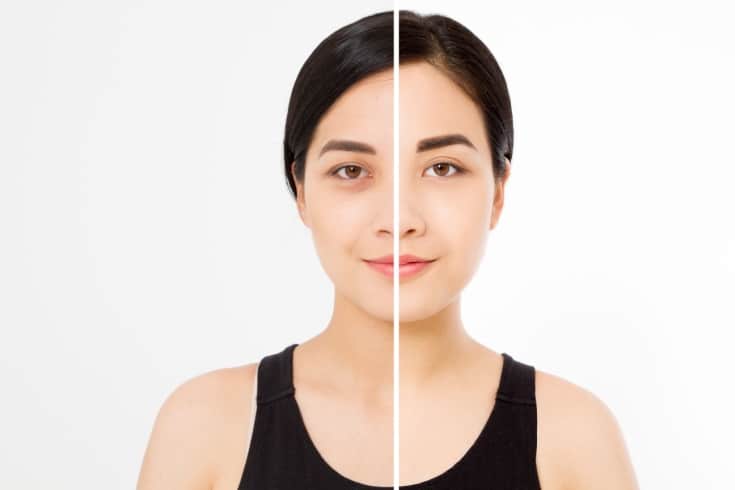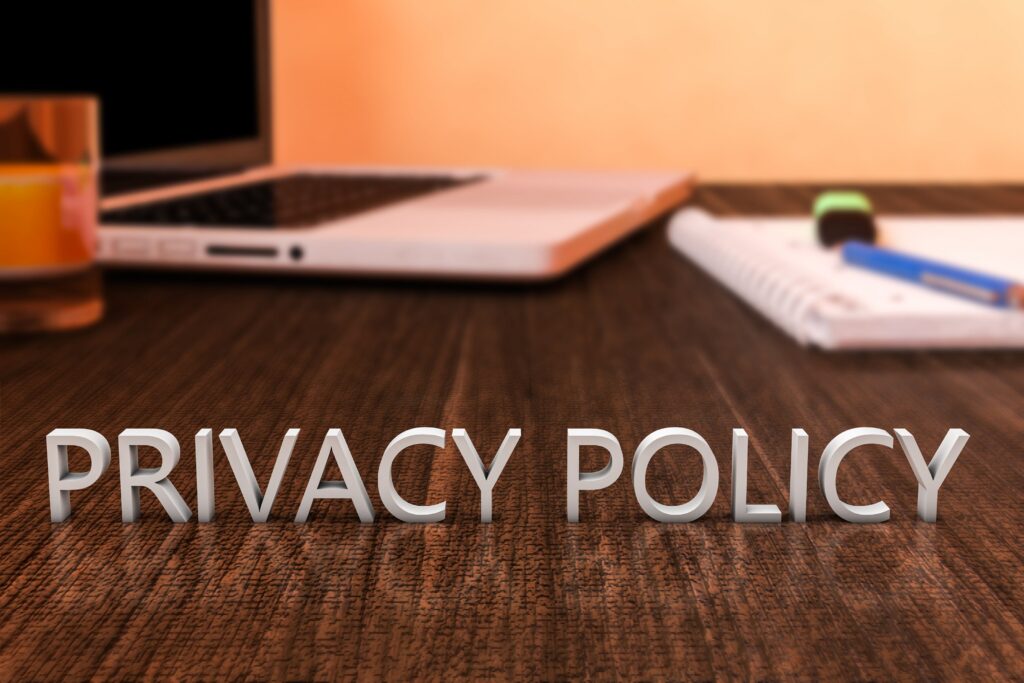Explaining in Detail the Cases Where Testimonials and Before-and-After Photos Become Prohibited under Medical Advertising Regulations

Advertisements promoting medical institutions such as hospitals and clinics are subject to regulations under the Japanese Medical Law and the Japanese Medical Advertising Guidelines. These regulations meticulously define what is prohibited, such as testimonials and the use of photographs, as well as what is permitted in advertisements. It is imperative to review these guidelines before publishing any medical advertisements, as non-compliance can result in penalties such as inspections and fines for the medical institution.
However, many may find it challenging to understand what constitutes illegal advertising, even after reading the guidelines provided by the Ministry of Health, Labour and Welfare (MHLW).
In this article, based on the case study book provided by the MHLW, we will introduce an overview of the regulations concerning medical advertising and specific examples of violations. We will also provide a detailed explanation of prohibited items under the MHLW’s ordinances, including the publication of testimonials and before-and-after photos. Please use this as a reference to ensure compliance.
What is Medical Advertising Regulation?
Medical advertising refers to advertisements related to medical practices, hospitals, and clinics. Medical advertising is regulated by the Japanese Medical Practitioners Act and ministerial ordinances established by the Ministry of Health, Labour and Welfare.
This article provides an overview of the regulations governing medical advertising.
- The purpose of medical advertising regulations
- Applicability and targets of medical advertising regulations
If you are unsure about what the medical advertising regulation system entails, please use this article as a reference.
The Purpose of Medical Advertising Regulations
Medical advertising is principally prohibited for the following reasons:
- Medical services are related to human life and health, and the consequences of being lured by inappropriate advertising into receiving unsuitable services can be significantly more severe than in other fields.
- Due to the high level of specialization in medical services, it is difficult to judge the quality of the services provided based on the wording of the advertisement alone.
In light of the unique nature of medical services, medical advertising regulations have been established to protect patients and other users. The regulations specify what is prohibited in advertisements and what is permissible to ensure that users are provided with accurate information and can make appropriate choices regarding treatment and other services.
Reference: Ministry of Health, Labour and Welfare | Guidelines on Advertising Related to Medical or Dental Practices, Hospitals, or Clinics (Medical Advertising Guidelines)
Applicability and Targets of Medical Advertising Regulations
The ‘medical advertising’ subject to regulation must meet the following criteria:
- Advertisements with the intention of inducing patients to seek consultation (Inducement)
- Advertisements that can identify the name of the person providing medical services, or the name of the hospital or clinic (Identifiability)
All advertisements for medical services targeting Japan fall under the scope of medical advertising regulations.
It is important to note that not only advertisements conducted by medical institutions themselves but also those published by mass media, affiliates, and others regardless of their title are subject to regulation.
For detailed information on the key points and criteria for medical advertising regulations, please refer to the following article.
Related article: A Lawyer’s Easy-to-Understand Explanation of the Key Points of Medical Advertising Guidelines[ja]
Medical Advertising Prohibited by Ministerial Ordinance Regulations
Advertisements that hinder the appropriate choice of medical care by patients and others are prohibited. (Article 6-5, Paragraph 2, Item 4 of the Japanese Medical Care Act)
To determine the standards for advertisements that impede appropriate choices, it is necessary to check the medical regulations established by the Ministry of Health, Labour and Welfare.
Medical Care Act Enforcement Regulations
Article 1-9: The standards for the content and method of advertising as prescribed by Article 6-5, Paragraph 2, Item 4 and Article 6-7, Paragraph 2, Item 4 of the Act are as follows:
Medical Care Act Enforcement Regulations | e-Gov Law Search[ja]
1. Advertisements based on the subjective experiences or hearsay regarding the content or effects of treatment, etc., by patients or others (hereinafter referred to as “patients, etc.”) are prohibited.
2. Advertisements using before and after photos or similar that may mislead patients, etc., regarding the content or effects of treatment, etc., are prohibited.
It is clear that advertisements featuring subjective testimonials or hearsay about treatments are not allowed. Additionally, the publication of before and after photos that could cause misconceptions about treatment is also prohibited. Examples of measures and penalties for violations include the following:
- Reporting orders or inspections (Article 6-8, Paragraph 1 of the Japanese Medical Care Act)
- Suspension orders or corrective orders (Article 6-8, Paragraph 2 of the Japanese Medical Care Act)
- Penalties of imprisonment or fines (Article 87, Item 1 and Article 89, Item 2 of the Japanese Medical Care Act)
To avoid unexpected troubles with advertising, always make sure to check the prohibitions set by the ministerial ordinance.
We will explain each prohibition with actual examples for clarity.
Four Specific Examples of Testimonials Prohibited by Medical Advertising Regulations

Here are four specific examples of testimonials that are regulated in medical advertising as defined in Article 1, Paragraph 9, Item 1 of the Japanese Medical Practitioners’ Act (医療法).
- Testimonials about treatment content and effects
- Descriptions provided by the medical institution’s staff
- Editing and reproduction of patient handwritten questionnaires
- Publication of testimonials described as the patient’s main complaint
Please review which cases fall under the requirement of “based on subjectivity or hearsay” as stated in the clause.
Testimonials on Treatment Details and Effects
It is prohibited to publish subjective testimonials based on personal experiences of patients or hearsay from their families in advertisements.
The reason for this is that opinions on the content and effects of treatments can vary depending on the individual condition of each patient. Introducing subjective opinions with the intent of attracting patients to medical institutions can lead to misconceptions among recipients. Therefore, it is forbidden to post comments about treatment content and effects on websites such as those of hospitals.
Furthermore, the act of reproducing comments from review sites is also prohibited. It is important to understand that selectively publishing favorable reviews for a medical institution could potentially constitute false advertising.
For explanations and case studies regarding false advertising in medical advertising regulations, please refer to the following article.
Related Article: What are Medical Advertising Guidelines? Explaining False and Exaggerated Advertising in Medical Advertising[ja]
Documentation by Medical Institution Staff
Testimonials based on personal experiences cannot be published, even if they are documented by the staff of medical institutions.
This prohibition applies in either of the following cases:
- Testimonials of the medical institution’s own staff
- Testimonials documented by the medical institution’s staff about patients or others
Be careful not to misunderstand that it is acceptable to simply include the words of employees on your own website. Phrases such as “The patient said they achieved their ideal body shape,” where medical staff document a patient’s experience on their behalf, are also not permitted. Understand that opinions on treatments vary depending on each patient’s condition and using them in advertising is not appropriate.
Processing and Reproduction of Patient Handwritten Surveys
Processing patient handwritten surveys, such as through image cropping or PDF conversion, for the purpose of publishing testimonials is also subject to regulation. This is because using individual opinions about treatments, which can vary greatly, in medical advertising could potentially lead to significant misunderstandings. Even if it is in the patient’s own handwriting, publishing it in advertisements is prohibited.
No matter the form, using subjective testimonials to attract patients to medical institutions is not permitted.
Publication of Testimonials as Patient Chief Complaints
When introducing testimonials such as treatment experiences as a patient’s chief complaint, they become subject to regulation. The chief complaint refers to the primary symptoms presented by the patient to the doctor.
For example, the following case introduction by a physician falls under the scope of regulation:
Patient A suffered from XX disease and visited our clinic. After consulting with the patient, we decided to start a treatment of YY, which they had not received before. After the first treatment, Patient A mentioned that their pain had eased, indicating an immediate effect. Furthermore, six months after starting the treatment, they reported a significant improvement, saying, “The pain has almost disappeared, and my daily life has become much easier.”
This case introduction appears to explain the patient’s chief complaint and treatment details, but it also includes the patient’s subjective testimonials.
When presenting treatment cases, it is tempting to use patient comments to make the information more relatable. However, regardless of the format, you must not publish testimonials based on personal experiences.
Three Prohibited Examples of Before-and-After Photos in Medical Advertising Regulations

It is not permitted to include photos in medical advertisements that could mislead patients about the results of treatment. However, the guidelines for medical advertising do allow for the inclusion of such photos if they are accompanied by detailed explanations.
Here, we introduce three examples of before-and-after photos that are prohibited under medical advertising regulations.
- Before-and-after photos that could mislead patients or others
- Only providing detailed explanations on the linked page
- Posting only before-and-after photos on banner images and social media (SNS)
Let’s take a closer look at each of these.
Before-and-After Photos That Could Mislead Patients or Others
Posting before-and-after photos that could mislead patients or others about the content and effects of treatment is prohibited.
This is because the results of treatment naturally vary from patient to patient. When posting photos related to treatment results, it is necessary to include detailed information.
- Only the before-and-after photos are posted without any explanation
- Lacking necessary information
It is important to be cautious not to publish in such a manner.
When posting before-and-after photos, always include the following information:
- Details of the treatment
- Cost
- Duration and number of sessions
- Risks
- Side effects
To prevent misleading by the impact of the photos alone, it is crucial to provide complete and detailed information.
Only Providing Detailed Explanations on the Linked Page
When posting before-and-after photos, it is prohibited to include the necessary accompanying information only on the linked page.
This is because it is essential to place detailed information about the treatment in a location that is easily understandable for patients. For example, it is not acceptable if pricing information can only be seen by moving to a separate pricing page. This applies even if the links are within the same website.
When posting before-and-after photos, ensure that all the necessary information is placed in a location where it can be seen at a glance.
Posting Only Before-and-After Photos on Banner Images and Social Media (SNS)
Posting only before-and-after photos on banner images or social media (SNS) is subject to regulation.
This also applies to images used to introduce social media on websites. If the detailed information about the before-and-after photos is not immediately accessible, it is prohibited regardless of the format.
With banner images and social media posts, there is a tendency to focus on the visual impact and prominently feature before-and-after photos.
However, if you choose to post before-and-after photos, it is imperative to include all the necessary information. If there are circumstances that prevent you from providing detailed explanations, it is better not to use before-and-after photos at all.
What Can Be Advertised Under Medical Advertising Regulations?
While we have explained specific examples of what is prohibited under medical advertising regulations, it is not the case that any advertisement is permissible as long as it does not fall under these illegal examples. The content that can be advertised as medical advertising is restricted by the Japanese Medical Practitioners’ Act.
Here, we will explain the items that can be advertised according to medical advertising regulations.
- Content that can be advertised as medical advertising
- Conditions for lifting restrictions on advertisable items
Let’s take a closer look at each.
Content that Can Be Advertised as Medical Advertising
The items that can be advertised as medical advertising are listed in Article 6-5, Paragraph 3 of the Japanese Medical Practitioners’ Act.
Conversely, this means that you must not advertise information other than the items that can be advertised as specified here.
Article 6-5 of the Medical Practitioners’ Act
3. Except in cases prescribed by Ministry of Health, Labour and Welfare ordinance where there is little risk that advertising matters other than those listed below will hinder the appropriate selection of medical care by those receiving medical treatment, advertising other than the following items shall not be done.
Medical Practitioners’ Act | e-Gov Law Search[ja]
Examples of items that can be advertised under Article 6-5, Paragraph 3 of the Medical Practitioners’ Act include:
- Being a physician or dentist
- Medical department name
- Name of the hospital or clinic, telephone number, location, and name of the administrator
- Consultation days, consultation hours, and availability of appointments
- The content of medical services provided (limited to those determined by the Minister of Health, Labour and Welfare)
The premise is that the information is useful for patients and others in making medical choices. Additionally, the content of the medical services must be subject to objective evaluation and verifiable after the fact.
If it is merely information that is unlikely to attract customers, it is legally permissible to include it in advertisements.
Conditions for Lifting Restrictions on Advertisable Items
According to the provisions of the Ministry of Health, Labour and Welfare ordinance, there are cases where items that do not fall under the advertisable items can be advertised.
This is based on the idea that it is necessary to facilitate the provision of appropriate information for information that patients and others actively seek and obtain.
The following are the four conditions for lifting restrictions on advertisable items:
- The advertisement is a website or similar that displays information sought by patients and others to aid in the appropriate selection of medical care.
- The information displayed must be easily inquirable by patients and others, with contact details provided or other methods to make this clear.
- Information on the content and costs of treatments typically required for elective medical services must be provided.
- Information on the main risks, side effects, etc., related to treatments for elective medical services must be provided.
If these conditions for lifting restrictions are met, advertisements of any kind can generally be published.
Since it concerns information that can be included in advertisements, always make sure to verify whether the conditions are met.
Conclusion: Consult with Experts When Posting Medical Advertisements
Medical advertisements are strictly regulated to protect patients and other users, with numerous prohibitions in place. This is because the potential harm from misleading advertisements is significantly greater in the field of healthcare, which deals with human life and health, compared to other sectors.
The regulations on publishing testimonials and before-and-after photos discussed in this article are standards set by the Ministry of Health, Labour and Welfare to ensure they do not impede patients’ appropriate medical choices.
The content included in medical advertisements must be carefully scrutinized to avoid violating medical advertising regulations. To prevent unexpected issues arising from oversights or assumptions, we highly recommend consulting with experts before posting any medical advertisements.
Guidance on Measures by Our Firm
Monolith Law Office is a law firm with extensive experience in both IT, particularly the internet, and legal matters. We provide services such as legal checks for articles and landing pages (LPs), guideline creation, and sampling checks for clients including media operators, review site operators, advertising agencies, and direct-to-consumer (D2C) businesses such as supplement and cosmetic manufacturers, clinics, and ASP service providers. Details are provided in the article below.
Areas of practice at Monolith Law Office: Article & LP Checks for Compliance with the Japanese Pharmaceutical and Medical Device Act, etc.[ja]
Category: General Corporate





















